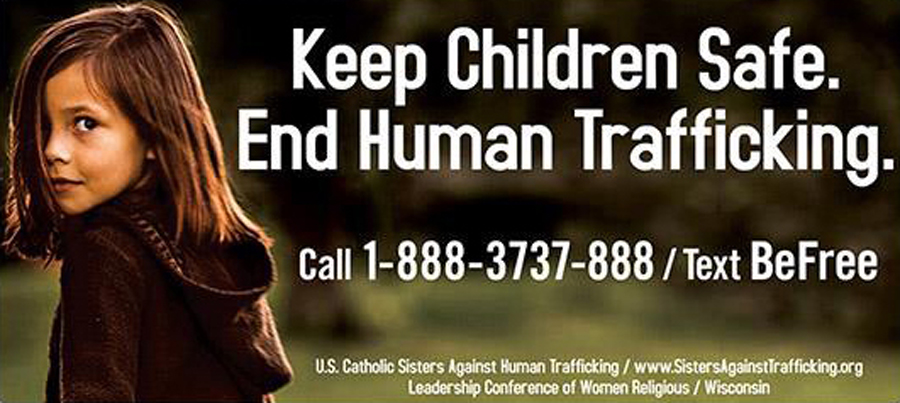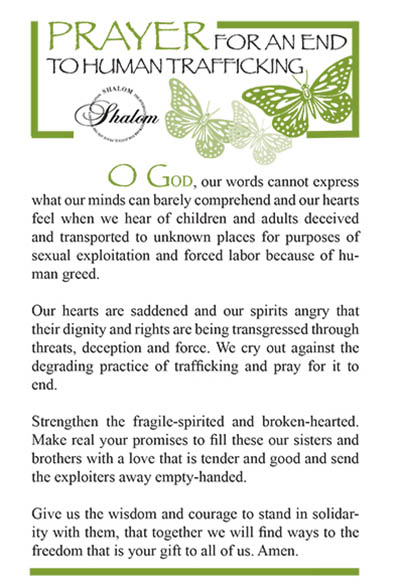Human trafficking is a form of modern slavery. It is also a multi-billion dollar criminal industry that denies freedom to 25 million people around the world. According to the Polaris Project, which works to end human trafficking, there are no places exempt from this heinous crime, and there are no persons who are safe from entrapment. The trafficking victim might be a runaway or kidnapped girl forced into prostitution at a truck stop or an undocumented immigrant man discovered in a restaurant kitchen, stripped of his passport and held against his will. All trafficking victims share one essential experience: the loss of freedom.
Because of the clandestine nature of the crime, it is difficult to determine the number of trafficking victims in the United States. In 2019, Global Law Enforcement Data reported 118,000 identified victims of human trafficking. That same year, the Polaris Project Trafficking Hotline saw a nearly 20 percent increase in the number of victims and survivors who contacted them directly about their own situations. Learn more about Human Trafficking statistics.
COVID-19 has generated conditions that increased the number of people who experienced vulnerabilities to human trafficking and interrupted existing and planned anti-trafficking interventions. Governments across the world diverted resources toward the pandemic, often at the expense of anti-trafficking efforts.
Defining Terms:
Human Trafficking – The United Nations Protocol to Prevent, Suppress and Punish Trafficking in Persons states that “trafficking in persons shall mean the recruitment, transportation, transfer, harboring or receipt of persons, by means of the threat or use of force or other forms of coercion, of abduction, of fraud, of deception, of the abuse of power or of a position of vulnerability or of the giving or receiving of payments or benefits to achieve the consent of a person having control over another person, for the purpose of exploitation. Exploitation shall include, at a minimum, the exploitation of the prostitution of others or other forms of sexual exploitation, forced labor or services, slavery or practices similar to slavery, servitude or the removal of organs.”
Who are the victims of human trafficking/modern day slavery?
According to the 2018 U.N. Global Report on the Trafficking in Persons, 80 percent of all detected trafficking victims are women and children. In terms of the different types of trafficking, sexual exploitation and forced labor are the most prominent. The UN report shows that trafficking can have numerous other forms, including victims forced to act as beggars, into sham marriages, to commit benefit fraud by applying for benefits, into pornography or into organ removal, among others.
The Polaris Project has a resource on how to recognize the signs of a trafficking victim.
Who is most vulnerable to human trafficking?
Human trafficking is present in every state and province the School Sisters of Notre Dame live and minister. While this atrocity can happen to anyone, some people are more vulnerable than others. People escaping from war and persecution are particularly vulnerable to becoming victims of trafficking. The urgency of their situation might lead them to make dangerous migration decisions. Other risk factors include people living in poverty, struggling with addiction or abuse, involvement with the child welfare system and being a runaway or homeless youth.
While women and girls tend to be trafficked for marriages and sexual slavery, men and boys are typically exploited in forced labor in the mining sector, as porters, soldiers and slaves.
Learn More
The School Sisters of Notre Dame help sponsor the Alliance to End Human Trafficking initiative and the Stop Trafficking! e-newsletter.
• Polaris Project
• Video: Human trafficking basics
• Annual Trafficking in Persons Report
• List of Goods Produced by Child Labor or Forced Labor
• Human Trafficking in America’s Schools
• ECPAT
• Just Act: Child Labor Series
• Human Trafficking and Historical Trauma in Indigenous Communities
What does this have to do with our faith commitment?
- U.S. Catholic Sisters Against Human Trafficking has put together resources to explain how Catholic Social Teaching applies to this issue
- The USCCB has put together a page about Catholic Social Teaching and the Church's fight to end trafficking
Now that you know, here’s what you can do:
- Share the information (above) with your network of friends, faith community and contacts.
- Contact your U.S. legislators
- Review and share these educational resources:
- Interfaith Toolkit, compiled by the Washington Inter-Religious Staff Community Working Group on Human Trafficking
- Educational Resources and Curriculum from U.S. Catholic Sisters Against Human Trafficking
- Additional Resources and important websites
- National Human Trafficking Hotline


